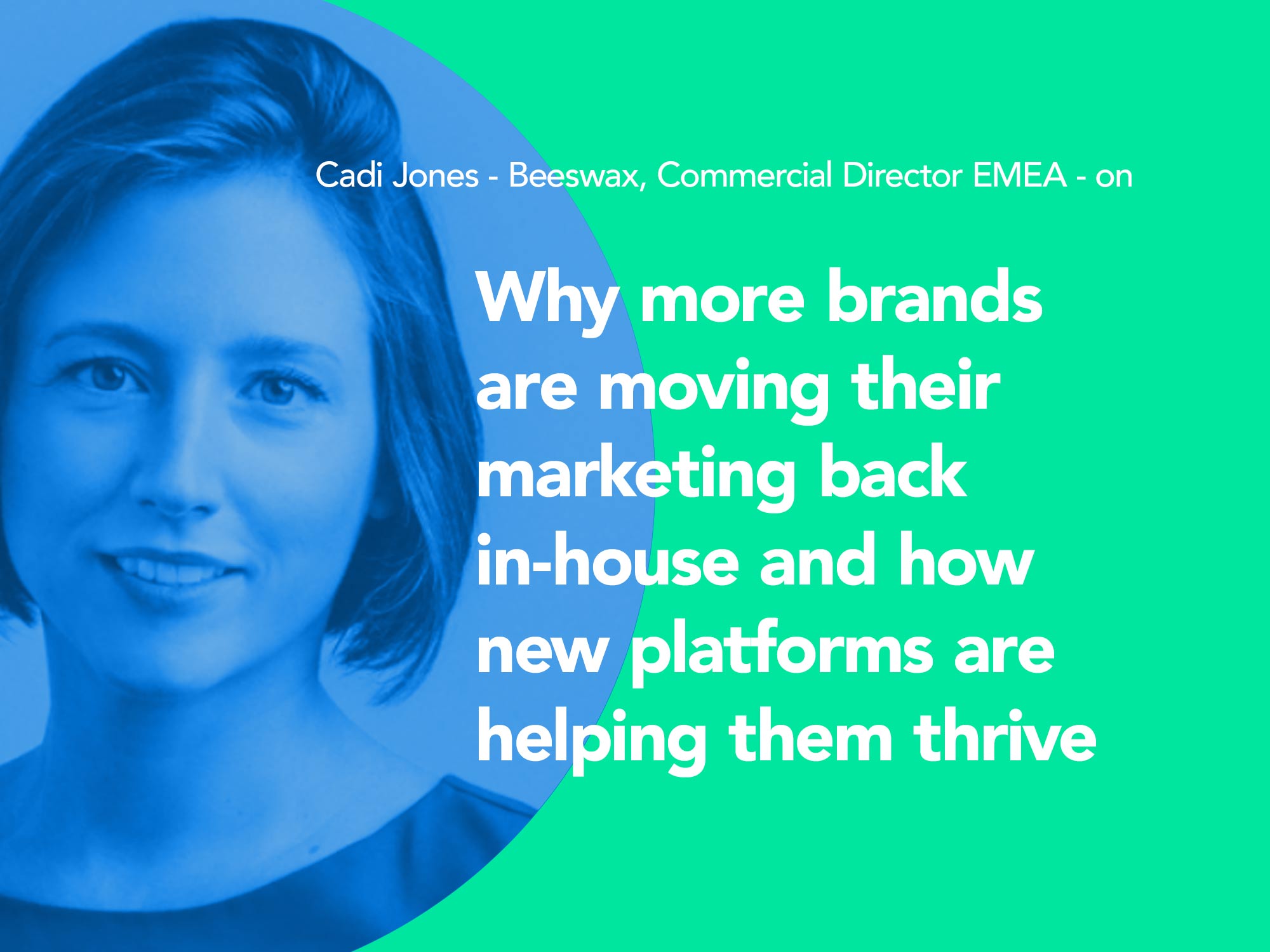 Cadi Jones is the commercial director, EMEA of Beeswax, a New York-based advertising software company offices in London and San Francisco.
Cadi Jones is the commercial director, EMEA of Beeswax, a New York-based advertising software company offices in London and San Francisco.
In her career, Cadi has been head of partnerships, a commercial innovation director and entrepreneur founding WomenPresent.com, a social enterprise that helps end the problem of poor gender diversity among speakers at conferences worldwide. Cadi recently shared her views in The Drum on the coming cookiepocalypse and what will change in a post-cookie world.
Cadi recently spoke with us for That Moment about the importance of transparency, Beeswax’s innovative bidder-as-a-service model and why “Pitchapalooza” started the trend of in-housing.
Audiens: So Beeswax is doing really well! The company has strong investment and backing from a “who’s who” of ad tech executives, and is considered the industry’s first custom programmatic buying platform, with all this success, what is the biggest challenge you face at Beeswax?
Cadi Jones: Creating a new category. While half of our customers use Beeswax as a regular Demand-Side Platform (DSP), with technical advantages in transparency, control and pricing, the other half use us [..] as an infrastructure on top of which they will build their own unique offering. The hardest part of this scenario is helping potential customers to see this difference and imagine what can be possible for them in the future. Effectively, you could build anything you want on top of our platform, but first, you have to figure out what you want to build.
Audiens: How has your Bidder-as-a-Service model helped the company enhance its offering to brands?
Jones: We made a conscious decision to not focus on one particular vertical, offering a white-glove service for a single-use case. Instead, we built technology designed as infrastructure. It’s the base that can allow you to build your own technology much much faster versus starting from scratch. The Bidder-as-a-Service™ model means that we are very clearly a software – and not a media – company, who would have some kind of skin in the game on the media that their clients are investing in. This allows us to offer something really unique to our customers.
Audiens: What has changed for brands tech-wise in how they reach their audience?
Jones: There’s been a huge amount of change in how brands are thinking about their audiences. If you go back even a couple of years, everyone was very excited about selecting a Data Management Platform and adding users to audience segments. What we’ve seen in the last couple of years is smart brands moving away from segments towards user scores.
A person cannot easily and reliably be bucketed into “target” or “do not target”. Instead, the decision is now how valuable
that user is to you, in the context of the inventory, timing and a plethora of other factors. So combining a score for each user, together with the inventory and timing signals, brands are thinking in a much more custom way about communicating with their audience.
Audiens: There is a trend of brands starting to move their marketing in-house, why has that become the trend versus outsourcing that to a digital agency?
Jones: Brands who are in-housing tend to do so for one or more of the following three reasons: transparency, control and flexibility.
- Transparency: Following the 2016 Association of National Advertisers report and ensuing “Pitchapalooza” which was well-documented in Ken Auletta’s book Frenemies, large brands caught a glimpse of some pretty murky practices resulting from years of procurement-led decisions that had driven prices down to media agencies and publishers [..]. Brands took notice and began to demand a much more transparent view of exactly what fees were taken not only from their agencies but most importantly with the various technology partners that they work within the advertising ecosystem.
- Control: Control is tightly linked to transparency, especially if you think of it as where is my advert running and who are the parties who are helping it to get to that publisher’s page. The rise of Supply Path Optimisation means that many buy-side decisions, such as which inventory sources to advertise in and which partners to involve, are actually being made by the platform. With many publishers working with multiple SSP partners, this gives each buyer the control to decide what they want to buy through which partners, effectively putting the power back into their hands.
- Flexibility: Whereas transparency and control are more about best practice for everyone, flexibility for us has been something quite different. This tends to be more interesting to digital-first, direct to consumer businesses, who have a significant amount of data at their fingertips. They may know that what drives clicks, or video completion rate is not what actually impacts their bottom line. As such, they want to optimize to something different, using their own data in meaningful ways. We’ve seen these brands build out their own algorithms to move the needle for their business, whether that is selling fast-moving consumer goods products in supermarkets or driving successful outcomes for their sports betting business.
Audiens: Where do you think the DSP model will be in five years?
Jones: Most DSPs have a very tough two years ahead, let alone five! Google has just announced they will be the final major browser to remove third party cookies. Very few programmatic platforms are ready for cookie-less buying. Most programmatic platforms both on the demand and supply side were built ten to fifteen years ago, where the only conceivable way for adverts to work was with cookies as the cornerstone technology.
Newer DSPs, such as Beeswax, were built on a single-tenant infrastructure, and in an identity (ID) agnostic way that does not rely on legacy cookie technology, and enables buyers to buy based on their own IDs or against their own objectives, through custom algorithms using signals based on the inventory under consideration. Other DSPs may be able to go back and re-factor this work, but it’s a fundamental architectural shift. I’m glad we’re not racing against the clock to get this done at Beeswax.

